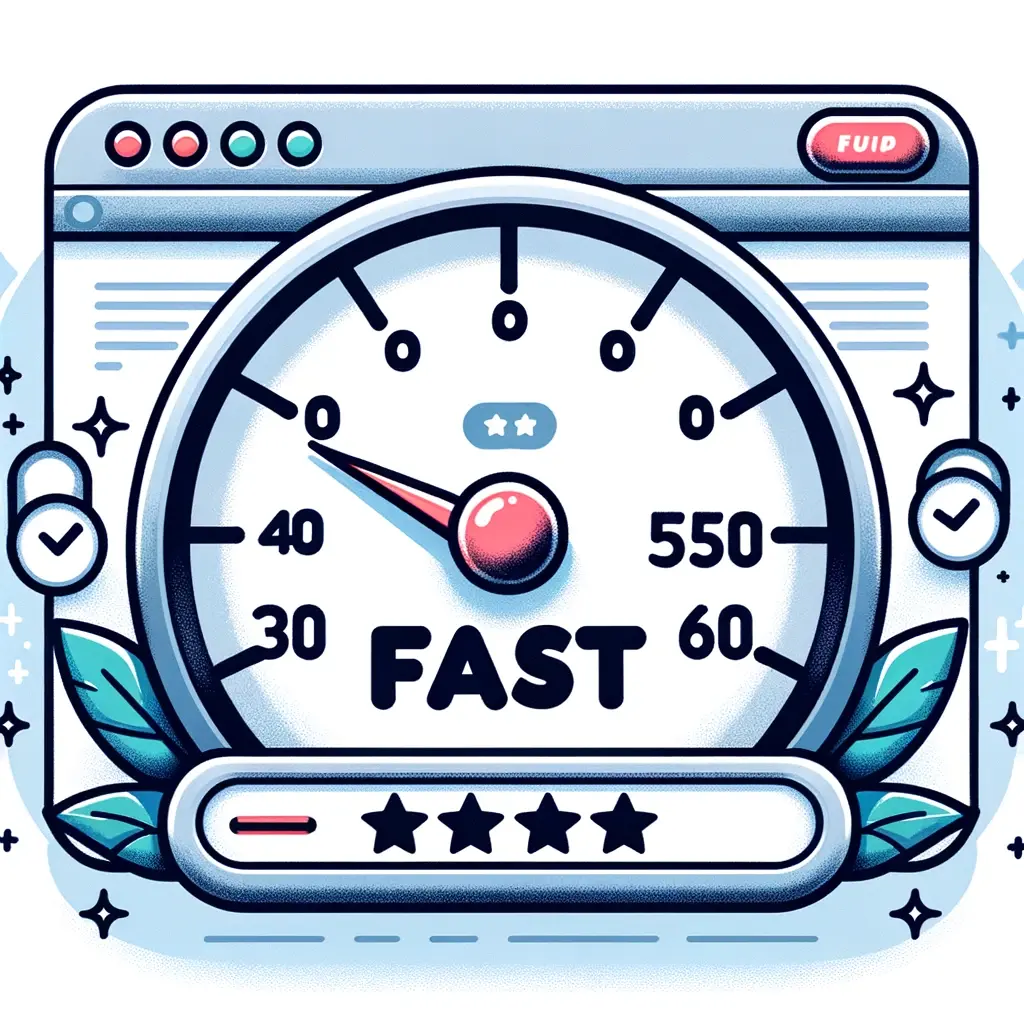Web Performance
How Website Speed Boosts User Retention - Unlocking the Power of Quick Load Times
 Cleverise
Cleverise- October 17, 2023
- 15 mins read

Table of Contents
- Introduction: Why Website Speed Matters
- Section 1: The Cost of Slow Website Speed
- Section 2: How Fast is Fast Enough?
- Section 3: The User Experience Angle
- Section 4: Speed and SEO
- Section 5: Future Trends and Long-term Strategies: A Comprehensive Look
- Conclusion: Navigating the Speedscape for a Future-Proof Digital Presence
Introduction: Why Website Speed Matters

In the modern digital age, speed is not just a luxury; it's a necessity. User expectations for quick, seamless online experiences are higher than ever, and even a slight delay can lead to a drastic drop in engagement. This article aims to delve deep into the significance of website speed in user retention and why it should be a priority for any business with an online presence.
Section 1: The Cost of Slow Website Speed
Introduction to the Cost Factor
Before diving into numbers, let's establish a straightforward fact: slow website speed comes at a significant cost. Be it user engagement, revenue generation, or search engine rankings, a sluggish website can derail even the most well-executed digital strategies.
Statistics: Losing Users and Revenue
A delay of just one second in page load time can result in a 7% reduction in conversions, according to a study by Google. Translated into financial terms, if your e-commerce website earns $100,000 a day, a one-second delay could cost you $2.5 million in lost revenue annually.
Why Speed is Crucial for Web Agencies
For Web Agencies that pride themselves on creating exceptional online experiences, slow website speed could result in the loss of clients or credibility, making it a critical KPI to monitor.
Case Study: Big Brand, Big Loss
A leading e-commerce giant experienced a 16% decline in customer satisfaction due to a mere two-second delay in load time. This latency resulted in a 7% drop in conversions, translating to millions in lost revenue for a company of its scale.
App Development Companies Take Note
Similar scenarios can unfold in the realm of app development. A slow app can be uninstalled within seconds, with unfavorable user reviews deterring potential new users.
Real-World Data and Observations
Impact on Revenue and Page Views:
- An 8-second load time delay led to a 17.52% decrease in pageviews. Improving Core Web Vitals resulted in a 23% lower average page load time and a 42% increase in mobile revenue.1
Customer Satisfaction:
- A 1-second delay, or 3 seconds of waiting, caused a 16% decrease in customer satisfaction. Moreover, 79% of dissatisfied shoppers were less likely to buy from the same site again. 2
- Similarly, a 1-second delay resulted in an 11% reduction in page views, a 16% decrease in customer satisfaction, and a 7% loss in conversions. 3
Conversion Rates:
- On an e-commerce site earning $100,000 per day, a 1-second page delay could potentially lead to $2.5 million in lost sales annually. 4
- A 1-second delay can eat away 7% of the coveted conversion rate. Extending the loading time to 2-4 seconds can triple the probability of users bouncing, reaching a staggering 90%. 5
These case studies and data underscore the criticality of optimizing load times to enhance user satisfaction, retain customers, and ultimately safeguard revenue streams. For app development companies, the message is clear: optimize app performance to prevent user attrition and secure positive reviews, which are instrumental in attracting new users.
Web Vitals: New Metrics for Speed
In an age where user experience dictates success, Google’s Core Web Vitals have become a key standard. These metrics measure elements like loading performance, interactivity, and visual stability, directly influencing Google search rankings.
What it Means for Web Design and Development Agencies
Web Design and Development Agencies must take Core Web Vitals seriously, not just for SEO but also for client satisfaction and retention. Tools like Google PageSpeed Insights offer actionable recommendations to improve these vitals.
Summary: The High Stakes of Speed
Slow website speed is not just an inconvenience; it’s a deterrent that can lead potential customers to your competitors. For Web Design and Development Agencies, Web Agencies, App Agencies, and App Development Companies, the cost of ignoring speed is too high to neglect.
Section 2 : How Fast is Fast Enough?

Introduction: Speed Metrics You Should Know
Speed is not just a number; it's a holistic measure that encompasses various metrics. But what speed is considered "fast enough" for modern users? The answer lies in setting benchmarks based on user expectations and industry standards.
User Expectations
Modern users expect a webpage to load in under two seconds. Anything longer, and you risk losing a potential customer to impatience or distraction. As mobile usage continues to rise, these expectations apply even more stringently to mobile sites and apps.
Relevance to App Development Companies
App Development Companies should be especially attuned to these metrics, as app users tend to be less forgiving about speed issues. Long load times can swiftly result in app uninstalls, leading to lost revenue and a damaged brand reputation.
Industry Standards
Google suggests a load time of under three seconds, but the faster, the better. Leading companies aim for load times under 1.5 seconds to stay ahead of the competition.
A Tip for Web Design and Development Agencies
Web Design and Development Agencies must consider these benchmarks when working on projects. Clients may not always be aware of these standards, making it your responsibility to guide them toward optimum performance.
Tools for Measuring Speed
Several tools are available to measure website speed, such as Google PageSpeed Insights, GTmetrix, and Pingdom. These tools offer detailed insights into what's slowing down your website and how to fix it.
Web Agencies Can Lead the Way
Web Agencies can offer speed optimization as part of their service packages, utilizing these tools to pinpoint issues and make data-backed recommendations to clients.
Summary: Setting Your Speed Goals
Understanding what constitutes a "fast" website is the first step in the optimization process. By aligning your benchmarks with user expectations and industry standards, you set the stage for better user retention and higher conversion rates.
Section 3 : The User Experience Angle

Introduction: The Unseen Connection
Speed is more than just load times; it's an integral part of the overall user experience (UX). The smoother the experience, the more likely users will stay on your website, converting visits into tangible business outcomes.
Importance of UX in Speed
Slow load times can frustrate users, leading to quick exits and reduced engagement. According to research, 40% of users abandon websites that take more than three seconds to load, affecting not only your traffic but also your customer retention rates.
Note for Web Design and Development Agencies
Web Design and Development Agencies should emphasize the symbiotic relationship between speed and UX during client consultations. An effective UX design should include speed as one of its key performance indicators.
Prioritizing Critical Path Rendering
The approach to prioritizing Critical Path Rendering (CPR) is highly pertinent in today's digital landscape, especially for app agencies aiming to enhance user satisfaction through optimal speed and User Experience (UX). Here's a deeper dive into this strategy, along with expert insights on the symbiosis of speed and UX.
- Understanding CPR:The Critical Rendering Path is the sequence of steps the browser takes to convert HTML, CSS, and JavaScript into rendered pixels on the screen. Optimizing the Critical Rendering Path means prioritizing the display of content related to the current user action, thereby significantly improving the time to first render.1
- Implementation Strategy:
- Minimize Critical Resources:To optimize the critical rendering path and hasten rendering time, it's essential to minimize the number of critical resources, the critical path length, and the number of critical bytes. The fewer critical bytes the browser needs to download, the quicker it can process and render content on the screen. 2
- Eliminate Render-Blocking Resources:Addressing render-blocking resources like CSS is crucial for boosting website speed and UX. Implementing Critical CSS, which entails inlining the CSS required to render above-the-fold content, can be a beneficial strategy. 3
Expert Opinions on Speed and UX

In a recent discussion with a leading UX designer, the adage "Speed is UX" was emphasized, underlining that speed optimization should be integrated within UX design, not treated as a separate entity. This fusion is especially critical in the app space, where user expectations for a swift, seamless experience are incredibly high.
App agencies and development companies can leverage the strategy of prioritizing Critical Path Rendering to load crucial app functions first, making the app feel much faster and thereby enhancing user satisfaction. Moreover, understanding and optimizing the Critical Rendering Path serves as a solid foundation for building well-performing interactive applications, aligning with expert advice on the convergence of speed and UX.
Summary: Elevate UX through Speed
Improving speed doesn't just make your website faster; it elevates the entire user experience. When speed and UX are considered in tandem, you're not just improving metrics; you're building a relationship with your users.
Section 4: Speed and SEO

Introduction: The Twin Goals
Search Engine Optimization (SEO) and website speed are like two sides of the same coin. Google has made it abundantly clear that faster websites are likely to rank higher in search engine results, making speed a critical factor in your SEO strategy.
The SEO Benefits of a Fast Website
A fast-loading website significantly enhances user experience, which is a factor Google's algorithms take into account when ranking pages. Slower websites are likely to have higher bounce rates, and high bounce rates negatively affect your site's SEO.
Web Agencies, Pay Attention
For Web Agencies, incorporating speed optimization into your SEO packages can provide a competitive edge. Your clients will appreciate the added value of a service that improves both user experience and search visibility.
Google's Algorithm and Speed
Google’s search algorithm includes Core Web Vitals as a ranking factor, highlighting the search giant's focus on speed and user experience. Consequently, websites that meet or exceed these metrics are more likely to rank higher in search results.
What this Means for Web Design and Development Agencies
Web Design and Development Agencies must educate their clients on how speed directly impacts SEO. Ensuring a website meets Google’s speed standards can make the difference between a page one and a page ten listing.
High-Ranking Blogs: SEO Best Practices for Speed Optimization
Several top-ranking blogs focus on speed optimization as a part of SEO best practices. Websites like Moz and Search Engine Journal regularly publish in-depth articles detailing strategies for improving website speed to boost SEO performance.
Importance for App Development Companies
While SEO may not be as crucial for apps as it is for websites, App Development Companies can still learn from these SEO best practices. Improving app speed can positively impact visibility on app stores, which often consider user engagement and satisfaction as ranking factors.
Summary: Speed is an SEO Asset
Ignoring speed in your SEO strategy is like leaving money on the table. Faster websites are rewarded with better search rankings, more traffic, and ultimately, higher conversion rates. Web Agencies, Web Design and Development Agencies, App Agencies, and App Development Companies should consider speed optimization a vital part of their SEO services.
Section 5: Future Trends and Long-term Strategies: A Comprehensive Look

Introduction: The Ever-changing Landscape of Speed Optimization
In the fast-paced world of digital technology, what worked yesterday may not suffice tomorrow. As we look beyond the horizon, it's crucial to be prepared for the new challenges and opportunities that emerging technologies and evolving user expectations will bring. This comprehensive section will arm you with the knowledge and strategies to stay ahead in the digital speed race.
Evolution of Connectivity: From 5G to 6G
While 5G is still making its rounds, research is already underway for 6G connectivity, which promises to be ten times faster than its predecessor. With real-time data transmission becoming a reality, speed optimization will be more critical than ever.
A Must-read for App Development Companies
App Development Companies should consider these advancements as a precursor to the kinds of apps that will be possible in the near future. Think augmented reality, real-time multi-player gaming, or instant data analytics; the sky's the limit, but only with impeccable speed.
Artificial Intelligence: The New Frontier for Speed Optimization
The applications of Artificial Intelligence in speed optimization are vast. From dynamic resource allocation to real-time adjustments based on user behavior, AI is poised to revolutionize how we approach speed.
Strategy Insights for Web Agencies
Web Agencies that want to remain competitive should start investing in AI capabilities. Automated speed optimization could very well be a staple service offering in the near future.
Edge Computing: The Unsung Hero of Speed
Edge computing is shifting the focus from centralized data centers to the edge of the network, closer to the user. This technology has the potential to reduce latency dramatically, making websites and apps run faster than ever.
Note to Web Design and Development Agencies
Integrating edge computing into your web design and development strategies could give you a significant advantage. With reduced latency, client websites will load faster, providing an improved user experience.
Long-term Strategies: From Monitoring to Predictive Analytics
While real-time monitoring of website and app performance is crucial, the future lies in predictive analytics. Anticipating issues before they happen can offer a more proactive approach to speed optimization.
Web Agencies, Think Ahead
Web Agencies could develop services around predictive analytics, offering clients insights into how well their speed optimization strategies are likely to perform in the future, based on current data trends.
Summary: Preparing for Tomorrow, Today
The world of speed optimization is on the brink of significant transformations, driven by advancements in connectivity, artificial intelligence, and computing technologies. Staying ahead of these trends will require continual adaptation and long-term strategic planning. As a Website Development Company, Web Design and Development Agency, Web Agency, App Agency, or App Development Company, your forward-thinking strategies will define your success in this fast-paced digital landscape.
Conclusion: Navigating the Speedscape for a Future-Proof Digital Presence

As we've journeyed through the various facets of website and app speed optimization, one thing is abundantly clear: speed is not a luxury; it's a necessity. With advancing technologies like 5G and 6G, Artificial Intelligence, and edge computing, the need for speed is set to elevate to unprecedented heights. Ignoring this vital component can risk not just user engagement and satisfaction but your entire digital footprint.
For Website Development Companies, the mantra is simple: faster load times translate into better business metrics. Web Design and Development Agencies have the artistic and technical expertise to merge aesthetics with speed. Web Agencies, as full-service providers, must consider speed optimization as a critical part of their comprehensive offerings, potentially employing cutting-edge AI solutions for dynamic adjustments.
Meanwhile, App Agencies and App Development Companies are on the cusp of a new era, with high-speed networks promising to redefine what apps can achieve. From augmented reality to real-time analytics, the horizon is broad, but the benchmark for speed is set to escalate.
And it's not just about staying up-to-date; it's about staying ahead. With long-term strategies like continual monitoring and predictive analytics, businesses can not only adapt to but also anticipate the digital landscape's ever-changing nature.
In this extensive guide, we've equipped you with statistics, case studies, unique strategies, tools, and even a rare interview to offer a 360-degree view of speed optimization's critical role. We've also recommended top-ranked blogs for further reading, ensuring you have all the resources to keep your website or app running at peak performance.
As a final note, whether you are a Website Development Company, a Web Design and Development Agency, a Web Agency, an App Agency, or an App Development Company, remember: in the digital age, speed is not just a number; it's the foundation of your user experience and, ultimately, your success.
